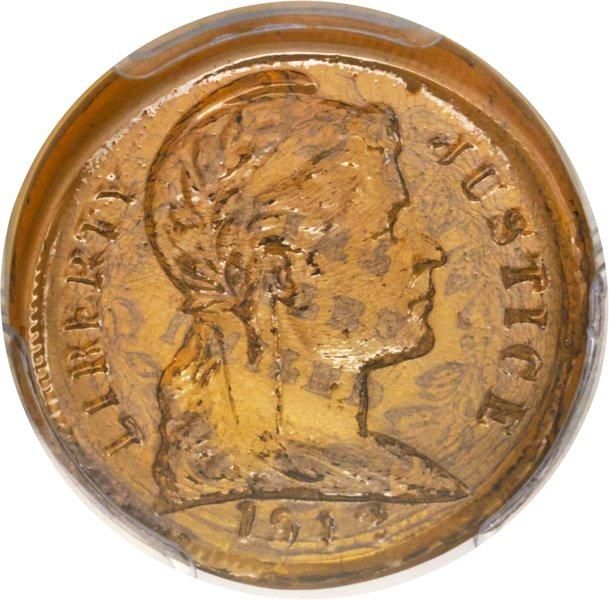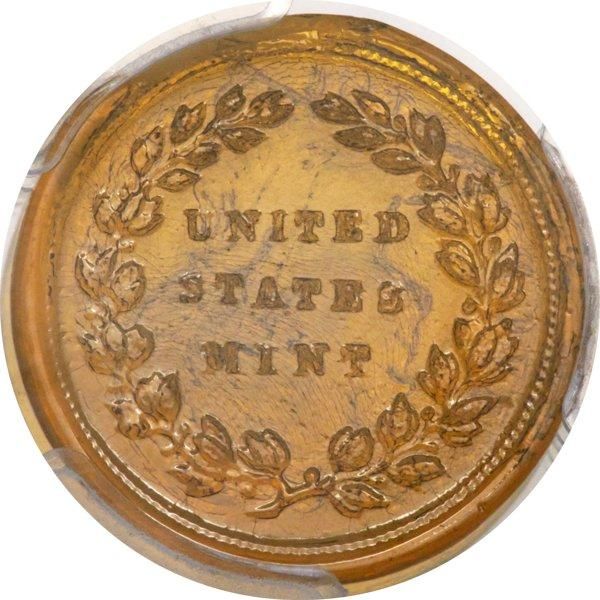Why a Glass Penny Cost One Collector Over $70,000
The prototype was part of a short-lived attempt to take the copper out of one-cent coins
Rationing was a fact of life during World War II, and Americans learned to live without materials like nylon, gasoline, sugar and rubber in an effort to fuel the war effort. Metal, too, was in short supply during the war—and one of the alternative materials experimented on to make American coins just helped push the value of a glass penny produced in 1942 to over $70,000.
In a recent auction, the single glass penny was sold for $70,500. In a release, Heritage Auctions notes that the penny more than doubled in value when a phone bidder and a floor bidder vied to buy it. (The phone bidder eventually prevailed.)
Its value came from its rarity—it was never put into circulation and is thought to be one of a kind. As Heritage Auctions, which sold the coin, the coin surfaced last year after it was discovered by Roger Burdette, a numismatist and historian who found it at a small auction. Burdette believes it is one of just two extant experimental glass pennies produced by Blue Ridge Glass in Tennessee during the 1940s that have survived to the present day, reports Terry Spencer for the Associated Press. The other is broken in half—perhaps proving why the experiment likely never came to fruition as circulating currency.
The penny was manufactured during a fraught time for the United States Mint. Pennies have been in circulation—and made of copper—since 1793, when they were first produced by the Mint. But copper shortages during the war threatened that long history. The U.S. needed copper for cartridge casings and other war needs, so supplies available for currency dropped. In response, the mint began to experiment with other materials like plastic and glass. Eventually, the Mint settled on using steel coated with zinc and produced 3 million temporary pennies for circulation. Known as “steelies,” these pennies were only in circulation for a year. The next year, the mint found an ingenious source of metal for pennies: the shell casings that had caused the shortage. It melted down spent casings left behind during combat and created a penny that circulated from 1944 to 1946.
The tempered glass penny was never used, but it’s intriguing to think of what it would have been like to have non-metal coins in circulation. In a way, it makes sense: Pennies have become notoriously expensive. Today’s pennies are made of copper and zinc and cost more to produce than they are worth, and in 2016 U.S. Treasury Secretary Jacob Lew recommended suspending its production. Pennies may no longer be worth making, but for one lucky buyer, a glass prototype was more than worth its weight in gold.
/https://tf-cmsv2-smithsonianmag-media.s3.amazonaws.com/accounts/headshot/erin.png)


/https://tf-cmsv2-smithsonianmag-media.s3.amazonaws.com/accounts/headshot/erin.png)